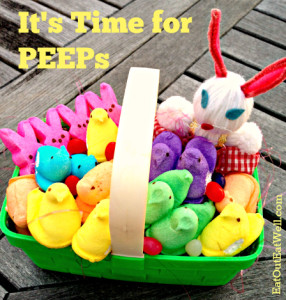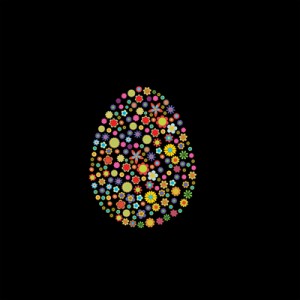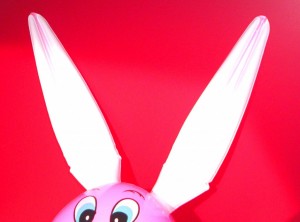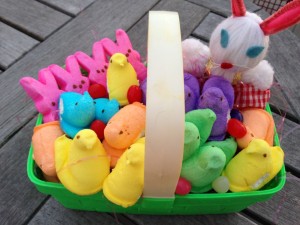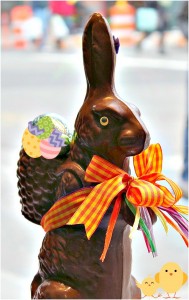 Do you think a bag of jellybeans should come with a warning label: “STOP NOW or you’ll keep eating until they’re gone?”
Do you think a bag of jellybeans should come with a warning label: “STOP NOW or you’ll keep eating until they’re gone?”
It’s pretty darn hard not to love those little nuggets of sweetness that come in multitudes of colors and flavors and get stuck in your teeth!
Americans eat 16 billion jellybeans at Easter – if they were lined up end to end they would circle the earth nearly three times.
Where Did Jellybeans Come From?
The gummy insides of jellybeans are thought to have originated from the centuries old treat, Turkish Delight. Jellybean outsides are just like the colored hard candy coating, developed in the late 17th century, for the Jordan almond.
The modern jellybean became popular during the American Civil War when Boston’s William Schraft encouraged citizens to send candy to Union soldiers. Jellybeans were the first bulk candy and they became one of the staples of the penny candy that was sold by weight in the early 1900s. Because of their egg shape, which can be taken as representing fertility and birth, they became popular as Easter candy around 1930.
Standard jellybeans come in fruit flavors but there are now a huge number of flavors like spiced, mint, tropical, popcorn, bubble gum, pepper, and cola. They also come in a sugar free version (seems weird, but true – don’t you wonder how many chemicals are in those?).
Teenee Beanee jelly beans and Just Born jellybeans are Pareve & O/U; Jelly Bellies are certified OU Kosher.
Do You Eat Them By The Handful Or Pick and Choose?
Do you eat your jellybeans one at a time, or do you gobble them up by the handful? What about colors and flavors – do you pick out your favorites or just eat them altogether?
- 70% of kids aged 6–11 say they prefer to eat Easter jellybeans one at a time
- 23% say they eat several at once
- Boys (29%) are more likely to eat a handful than girls (18%)
- Kids say their favorite Easter jellybean flavors are cherry (20%), strawberry (12%), grape (10%), lime (7%), and blueberry (6%)
What’s In The Hard Shelled Nugget Of Sweetness?
Jelly beans are primarily made of sugar and also usually contain gelatin (Jelly Bellies don’t), corn syrup, modified food starch, and less than 0.5% of citric acid, sodium citrate, artificial flavors, confectioners glaze, pectin, carnauba wax, white mineral oil, magnesium hydroxide, and artificial colors.
The traditional jellybean has flavor only in the shell. In 1976, the Jelly Belly (Goelitz) Candy Company introduced their gourmet jellybeans, Jelly Bellies, which are smaller and softer than the traditional kind and are flavored both inside and outside. Jelly Belly makes about 50 different flavors of gourmet jellybeans.
Calories in jellybeans:
Even though they may give you Technicolor insides, jellybeans are fat free. On average:
- 10 small jellybeans (11g) have 41 calories, no fat, no cholesterol, no protein, and 10.3 grams of carbs
- 10 large jellybeans (1 ounce or 28g) have 105 calories, no fat, no cholesterol, no protein, and 26.2g carbs
- 10 Jelly Bellies have 40 calories (4 calories a piece), or about 100 calories in a single serving (25 beans)
Jelly Bellies
- Jelly Bellies were invented in 1976 and were the first jellybeans to be sold in single flavors and a menu of flavor choices.
- It takes 7 to 21 days to make a single Jelly Belly jellybean.
- Very Cherry was the most popular Jelly Belly flavor for two decades until 1998, when Buttered Popcorn took over. Very Cherry moved back into the top spot by only 8 million beans in 2003.
- Jelly Bellies were the first jellybeans in outer space – they were sent on the space shuttle Challenger (1983) by President Reagan, a big jellybean fan.
- Jelly Bellies don’t contain gelatin and are suitable for vegetarians, but some strict vegans may have issues with the beeswax and shellac used to give them their final buff and polish.
- Jelly Belly jellybeans do not contain any wheat, rye, barley, or oats in the basic recipe. The modified food starch used to manufacture them is cornstarch and all ingredients are free of dairy.
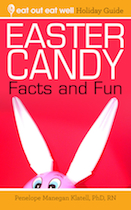 If you want more fun facts about Easter Candy head on over to Amazon for Easter Candy Facts and Fun. It’s a lot of fun info for just 99 cents.
If you want more fun facts about Easter Candy head on over to Amazon for Easter Candy Facts and Fun. It’s a lot of fun info for just 99 cents.
